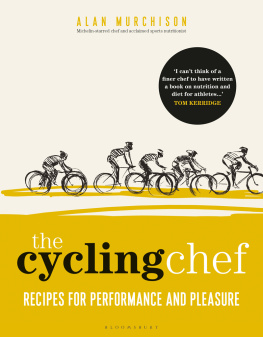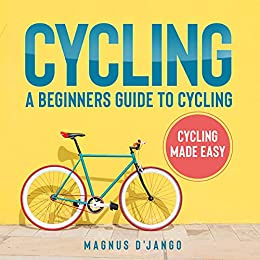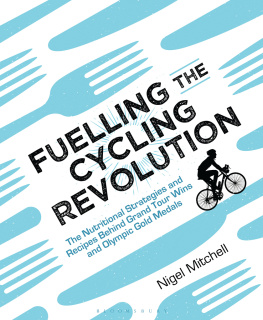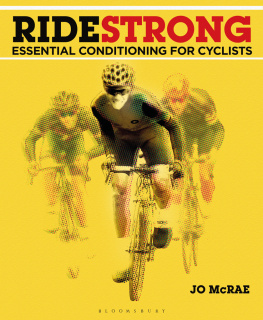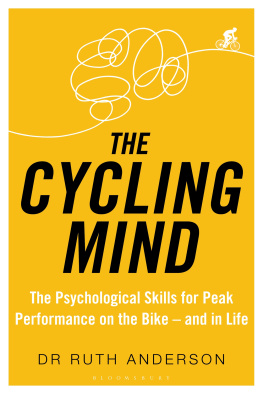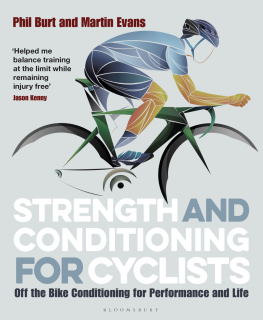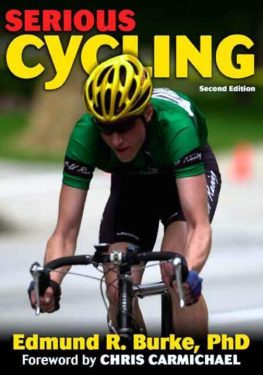
BLOOMSBURY SPORT
Bloomsbury Publishing Plc
50 Bedford Square, London, WC1B 3DP, UK
This electronic edition published in 2019 by Bloomsbury Publishing Plc
BLOOMSBURY, BLOOMSBURY SPORT and the Diana logo are trademarks of Bloomsbury Publishing Plc
First published in Great Britain in 2019
Copyright Alan Murchison, 2019
Food photography by Clare Winfield
Food styling by Rebecca Woods
Other photography by Grant Pritchard
Design by Sian Rance for D.R. ink
Images on pp. Getty Images
Alan Murchison has asserted his right under the Copyright, Designs and Patents Act, 1988, to be identified as Author of this work
For legal purposes the constitute an extension of this copyright page
All rights reserved
You may not copy, distribute, transmit, reproduce or otherwise make available this publication (or any part of it) in any form, or by any means (including without limitation electronic, digital, optical, mechanical, photocopying, printing, recording or otherwise), without the prior written permission of the publisher. Any person who does any unauthorised act in relation to this publication may be liable to criminal prosecution and civil claims for damages.
The information contained in this book is provided by way of general guidance in relation to the specific subject matters addressed herein, but it is not a substitute for specialist dietary advice. It should not be relied on for medical, health-care, pharmaceutical or other professional advice on specific dietary or health needs. This book is sold with the understanding that the author and publisher are not engaged in rendering medical, health or any other kind of personal or professional services. The reader should consult a competent medical or health professional before adopting any of the suggestions in this book or drawing inferences from it. The author and publisher specifically disclaim, as far as the law allows, any responsibility from any liability, loss or risk (personal or otherwise) which is incurred as a consequence, directly or indirectly, of the use and applications of any of the contents of this book. If you are on medication of any description, please consult your doctor or health professional before embarking on any fast or diet.
British Library Cataloguing-in-Publication Data
A catalogue record for this book is available from the British Library
Library of Congress Cataloguing-in-Publication data has been applied for
ISBN: 978-1-4729-6002-3 (HB)
ISBN: 978-1-4729-6003-0 (eBook)
ISBN: 978-1-4729-6000-9 (ePDF)
Bloomsbury Publishing Plc makes every effort to ensure that the papers used in the manufacture of our books are natural, recyclable products made from wood grown in well-managed forests. Our manufacturing processes conform to the environmental regulations of the country of origin.
To find out more about our authors and their books please visit www.bloomsbury.com where you will find extracts, author interviews and details of forthcoming events, and to be the first to hear about latest releases and special offers, sign up for our newsletter.

Contents

French cyclist Andre Darrigade grabs a musette at high speed during the 1956 Tour de France. He was awarded that years Combativity Award and held the yellow jersey during six stages.
Introduction
Cycling and food are the twin passions of my life. In Performance Chef, the business I set up in 2016 to provide meal planning, recovery strategies and race fuelling advice to elite athletes, Im able to combine my experience as a Michelin-starred restaurant chef with a first-hand knowledge of elite sport. The guiding philosophy of Performance Chef is that nutrition is not only an integral part of any athletes planning and preparation, but also that food should satisfy the appetite and the taste buds: food that is both for pleasure and for performance.

This book gives me the opportunity to expound upon that philosophy and provide recipes that any aspiring high-performance cyclist can follow.
Im in the fortunate position of working with cyclists of all abilities, from Olympic champions, Commonwealth medallists and World Tour riders to those who are entering their first sportive, and one constant I see on a daily basis is that the quality of the food they eat and a well-balanced diet are key to their improvement, recovery and general good health.
Athletes want and need to eat well to maximise their performance. However, the majority of professional or elite cyclists are training so hard that there is nothing they want to do less than spend hours in a kitchen slaving over a stove. Similarly, recreational cyclists of all abilities have limited time during the day to deal with training, work, kids, family and general living, let alone mastering complicated nutritional information. Post-ride, no cyclist ever stands in a supermarket in their bib shorts, working out the macronutrients of the food they have thrown into their shopping trolley. They want to eat, they want to train and they want to feed themselves as best they can with the limited inclination, time, knowledge or money they have at their disposal, and thats where this book can help.
If youre not training or racing as well as you had envisaged then its probably down to over- or under-training (if you use a platform like TrainingPeaks [www.trainingpeaks.com] or are coached well, this is pretty unlikely); not recovering properly; or under- or over-fuelling. Training load must be matched with appropriate fuelling, so your food requirements will vary considerably from day to day and from month to month depending on how much you are doing.
One constant I see on a daily basis is that the quality of the food they eat and a well-balanced diet are key to their improvement, recovery and general good health.
Your daily intake will depend on your training and race schedule. You dont need a 5000-calorie day when youre doing a 60-minute recovery ride any more than you can get by drinking water and eating a green salad with some grilled chicken when youve been out for an honest 100-miler. Hill reps, over-geared work, intervals or race simulation that can cause muscle damage also require high-protein and high-carbohydrate recovery meals to help refuel and repair. This demands some forethought and preparation, particularly if youre fitting your training into a working day.
Once youve accepted the link between fuelling and training and the importance of both to performance, youre halfway there. Your nutritional plans will include a balance of vegetables, grains, meat, pulses and fish, but what and when you eat will depend on your training and racing schedule. Meals can be planned in detail if thats how you roll, but items in the same food groups are often interchangeable according to what you fancy, so red meat can be swapped for chicken, kale for broccoli, kidney beans for aduki beans, etc.
As a chef in top restaurants, Ive learned to have confidence in ingredients, to let food groups stand up for themselves and give meals colour, flavour and texture, but a few key skills and tips can make a real difference to how you approach cooking and eating. It isnt difficult; theres a massive choice of ingredients open to you, all easily obtainable at your local supermarket. Most of the athletes I work with have really rich and varied diets, eating food that helps improve their performance while tasting pretty good.

